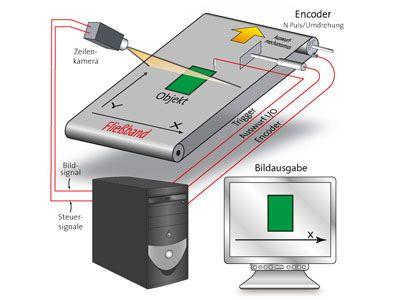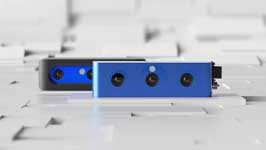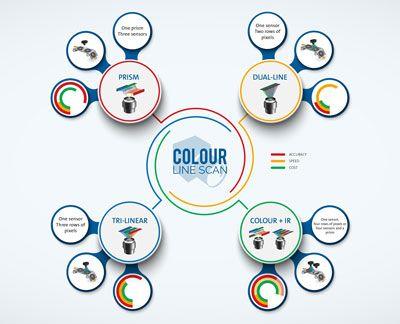 With its extensive line scan camera range and based on its wealth of experience in line scan camera applications, Stemmer Imaging supports end users, OEMs and system integrators in finding the optimal solution for their individual image processing tasks. This technical article describes what needs to be considered when selecting the appropriate color line scan camera.
With its extensive line scan camera range and based on its wealth of experience in line scan camera applications, Stemmer Imaging supports end users, OEMs and system integrators in finding the optimal solution for their individual image processing tasks. This technical article describes what needs to be considered when selecting the appropriate color line scan camera.
Line scan camera vision is a proven technique used in a wide range of applications, such as inspection of continuous material or objects on a conveyor belt. This method is particularly helpful for objects of different lengths or when high-resolution imagery is required. The use of the line camera technology is also very well suited for the detection of cylindrical objects. These are difficult to detect with area cameras and would require correction of the distortion created by imaging the curved surface. Similarly, it would take a lot of images to capture the entire surface. A line camera, on the other hand, picks up the same part of a cylinder without distortion. The rotation of the cylinder creates a "unwound" image of the entire surface.
If color is important
Monochrome sensors are perfectly adequate for most applications, regardless of whether they are designed for area or line scan cameras, unless the color information is a decisive criterion for the inspection task. Vision applications that require the use of color line scan cameras include recycling (e.g. multicolored bottle caps), mail sorting, web goods inspection, food inspection, label inspection and wire harness assembly inspection.
 3D Camera | Industrial image processing
3D Camera | Industrial image processing
Monochrome line camera sensors have only one row of light-sensitive picture elements that continuously scan moving objects with a high line frequency. However, color segmentation into the three primary colors red, green and blue (and sometimes a fourth – infrared) requires more complex sensor technology.
Types of color line cameras
 Color line cameras can be divided into two categories: 1 chip cameras with 2, 3 or 4 lines or 3 or 4 chip cameras, where a prism is used, which splits the individual wavelengths, which are detected by different sensors simultaneously , Each of these methods has its own specific advantages.
Color line cameras can be divided into two categories: 1 chip cameras with 2, 3 or 4 lines or 3 or 4 chip cameras, where a prism is used, which splits the individual wavelengths, which are detected by different sensors simultaneously , Each of these methods has its own specific advantages.
1-chip camera
Simple color line cameras can be implemented using a dual-line sensor. Values for 2 out of 3 colors are generated for each horizontal object point. Through pre-processing, the third color is interpolated via the neighboring pixels so that the image data for red, green and blue can be transmitted. There are many formats for positioning the colored pixels.
One method works with an alternating pattern similar to that of the Bayer format in area scan cameras. In another method, green filters are used for the first row of pixels, while red and blue filters are used alternately for the pixels of the second row. The second method has the great advantage that full resolution is obtained in one wavelength range. For many applications, this cost-effective solution is a good compromise.
In trilinear cameras, 3 chip lines are arranged directly next to each other in the same pixel pitch in a sensor chip. The distances between the lines are compensated in the camera, in the frame grabber or in the software. This architecture provides good sensitivity, but is limited to shooting flat, two-dimensional objects. If trilinear line scan cameras from different manufacturers are compared with each other, pay attention to the line spacing. Small-line-spacing cameras are less susceptible to vibration and velocity changes of the specimen, and are thus close to the image quality of prism line cameras.
3-chip color cameras
This method uses a prism that splits white light into red, green, and blue components, each captured by different sensors within the camera. These cameras are capable of capturing three-dimensional objects without causing spatial distortion problems because the pixels for R, G, and B are the same for each object position. As a result, no unwanted halo effects occur. Prism-based camera systems are perfect for complex high-speed applications such as continuous material inspection.
Color and infrared line scan cameras
For some printing applications or security features detection, an infrared channel may also be required. There are two options, either a quad-linear line scan camera system or a prism-based system. Depending on the cameras have a sensor with three RGB lines and an additional line without color filter, but with a dichroic filter that blocks either the visible or the IR range, or a prism with four sensors, of which three RGB wavelength range cover and one the infrared range.